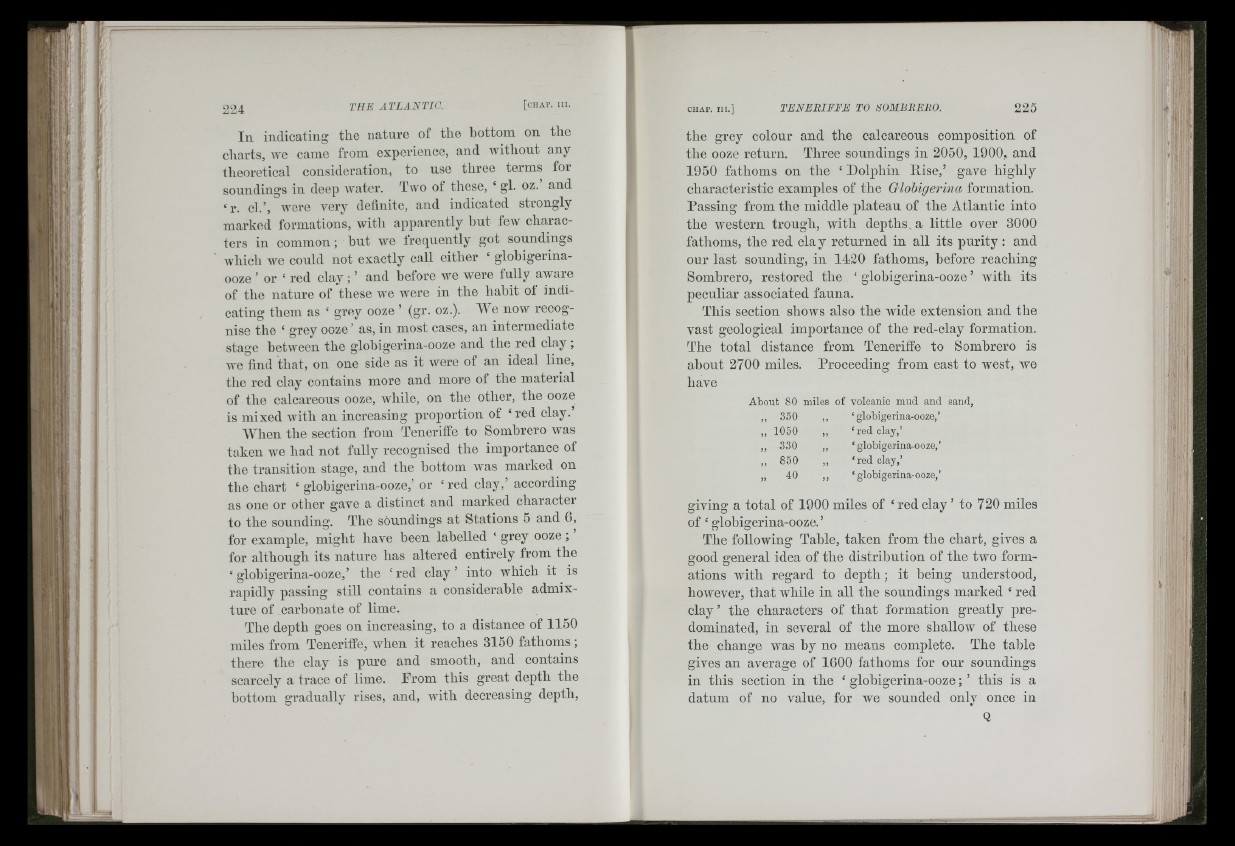
Iii" 5
2 2 4 THE ATLANTIC.
In indicating the nature of the bottom ou the
cliarts, we came from experience, and Avithout any
theoretical consideration, to use three terms for
soundings iu deep Avater. Two of these, ‘ gl. oz.’ aud
‘ r. cl.’, Avere very definite, and indicated strongly
marked formations, with apparently hut fcAV characters
in common; but Ave trequently got soundings
which we could not exactly call either ‘ globigerina-
ooze ’ or ‘ red clay ; ’ and before we were fully aAvare
of the nature of these we were in the habit of indicating
them as ‘ grey ooze ’ (gr. oz.). We u o a v recognise
the ‘ grey ooze ’ as, in most cases, an intermediate
stage between the globigerina-ooze aud the red c lay;
Ave find that, on one side as it Avere of an ideal line,
the red clay contains more and more of the material
of the calcareous ooze, Avhile, on the other, the ooze
is mixed Avith an increasmg proportion of ‘ red clay.
When the section from Tenerifie to Sombrero Avas
taken we had not fully recognised the importance of
the transition stage, aud the hottom was marked on
the chart ‘ globigerina-ooze,’ or ‘ red clay,’ according
as one or other gave a distinct and marked character
to the sounding. The soundings at Stations 5 aud 6,
for example, might have been labelled ‘ grey ooze; ’
for although its nature has altered entirely from the
‘ glohigerina-ooze,’ the ‘red c la y ’ into whicli it is
rapidly passing still contains a considerable admixture
of carbonate of lime.
The depth goes on increasing, to a distance of 1150
miles from Tenerifie, Avhen it reaches 3150 fathoms;
there the elay is pure and smooth, aud contains
scarcely a trace of lime. From this great depth the
hottom gradually rises, aud, Avith decreasing depth.
the grey colour aud the calcareous composition of
the ooze return. Three soundings in 2050, 1900, and
1950 fathoms ou the ‘ Dolphin llise ,’ gave highly
characteristic examples of the Glohigerina formation.
Passing from the middle plateau of the Atlantic iuto
the Avestern trough, with depths a little over 3000
fathoms, the red cla y returned iu all its purity : and
our last sounding, iu 1420 fathoms, before reaching
Sombrero, restored the ‘ glohigerina-ooze ’ Avith its
peculiar associated fauna.
This section shows also the wide extension aud the
vast geological importance of the red-elay formation.
The total distance from Tenerifie to Sombrero is
ahout 2700 miles. Proceeding from east to west, we
have
About 80 miles of volcanic mud and sand,
„ 350 ,, ‘globigerina-ooze,’
„ 1050 ,, ‘red clay,’
„ 330 „ ‘globigerina-ooze,’
„ 850 „ ‘red clay,’
„ 40 ,, ‘globigerina-ooze,’
giving a total of 1900 miles of ‘ red clay ’ to 720 miles
of ‘ globigerina-ooze. ’
The following Tahle, taken from the chart, gives a
good general idea of the distribution of the two formations
Avith regard to depth; it being understood,
however, that Avhile iu all the soundings marked ‘ red
clay ’ the characters of that formation greatly predominated,
iu several of the more shallow of these
the change was by no means complete. The table
gives an average of 1600 fathoms for our soundings
iu this section iu the ‘ glohigerina-ooze; ’ this is a
datum of no value, for we sounded only once in
Q
I f l ' l l t e . P J j t . iHIAu- i
f: -te M l